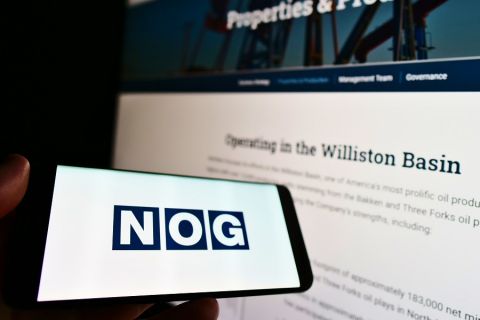Permian Basin producers received news likely to lead to a partial respite of pressure on regional oil price differentials, as Magellan Midstream Partners LP said it has now received regulatory approval to raise capacity on its Longhorn pipeline by 50,000 barrels per day (bbl/d) to 275,000 bbl/d. The expansion will help boost second-half shipments out of the Permian, where Midland basis differentials have traded at a recent discount of over $7/bbl to West Texas Intermediate and in March were at one point as high as $18/bbl.
The Longhorn Pipeline is one of two pipeline projects serving the Permian. Magellan began the startup of the Longhorn Pipeline during the second quarter of 2013, ramping volumes to about 200,000 bbl/d in the first quarter of this year. The BridgeTex project—the largest organic growth project in Magellan’s history with a $600 million capital commitment—is due to begin initial linefill late in the second quarter of this year. Its design capacity is 300,000 bbl/d. Both projects deliver into the Gulf Coast market.
Longer term, additional takeaway is going to be an ongoing issue for the Permian, a point made by Pioneer Natural Resources’ CEO, Scott Sheffield, speaking at the Independent Petroleum Association of America (IPAA) OGIS meeting in New York. Sheffield showed a slide illustrating takeaway plans, which also include the Cactus and Permian Express II projects by Plains All-American Pipeline and Sunoco, each with 200,000 bbl/d capacity that are due to come online in the second quarter of 2015.
“The Permian is growing today at about 200,000 bbl/d per year, and I anticipate it will pick up to 250,000 to 300,000 bbl/d per year over the next couple of years,” said Sheffield. “I anticipate that every four years we will need another 1 million barrels per day going out to the Gulf Coast and eventually to California and other places.”
Underlying Sheffield’s projection was an assumption the industry would add between 40 and 60 horizontal rigs per year in the Midland Basin alone, with production reaching 2.5 million bbl of oil equivalent per day during the next 20 years. Another slide showed data by Tudor, Pickering, Holt & Co. projecting 4.8 million bbl of oil equivalent per day of production from the Midland, Central Platform and Delaware basins by 2025.
Recommended Reading
Occidental Increases Annual Dividend by 22%
2024-02-11 - Occidental Petroleum Corp.’s newly declared dividend is at an annual rate of $0.88 per share, compared to the previous annual rate of $0.72 per share.
Atmos Energy Announces Quarterly Dividend
2024-02-11 - Atmos’ dividend marks the company’s 161st consecutive quarterly dividend.
From Restructuring to Reinvention, Weatherford Upbeat on Upcycle
2024-02-11 - Weatherford CEO Girish Saligram charts course for growth as the company looks to enter the third year of what appears to be a long upcycle.
Atlas Energy Solutions Declares Dividend
2024-02-09 - Atlas Energy’s dividend represents a 5% increase from the previous quarter’s dividend.
Northern Oil and Gas Ups Dividend 18%, Updates Hedging
2024-02-09 - Northern Oil and Gas, which recently closed acquisitions in the Utica Shale and Delaware Basin, announced a $0.40 per share dividend.





